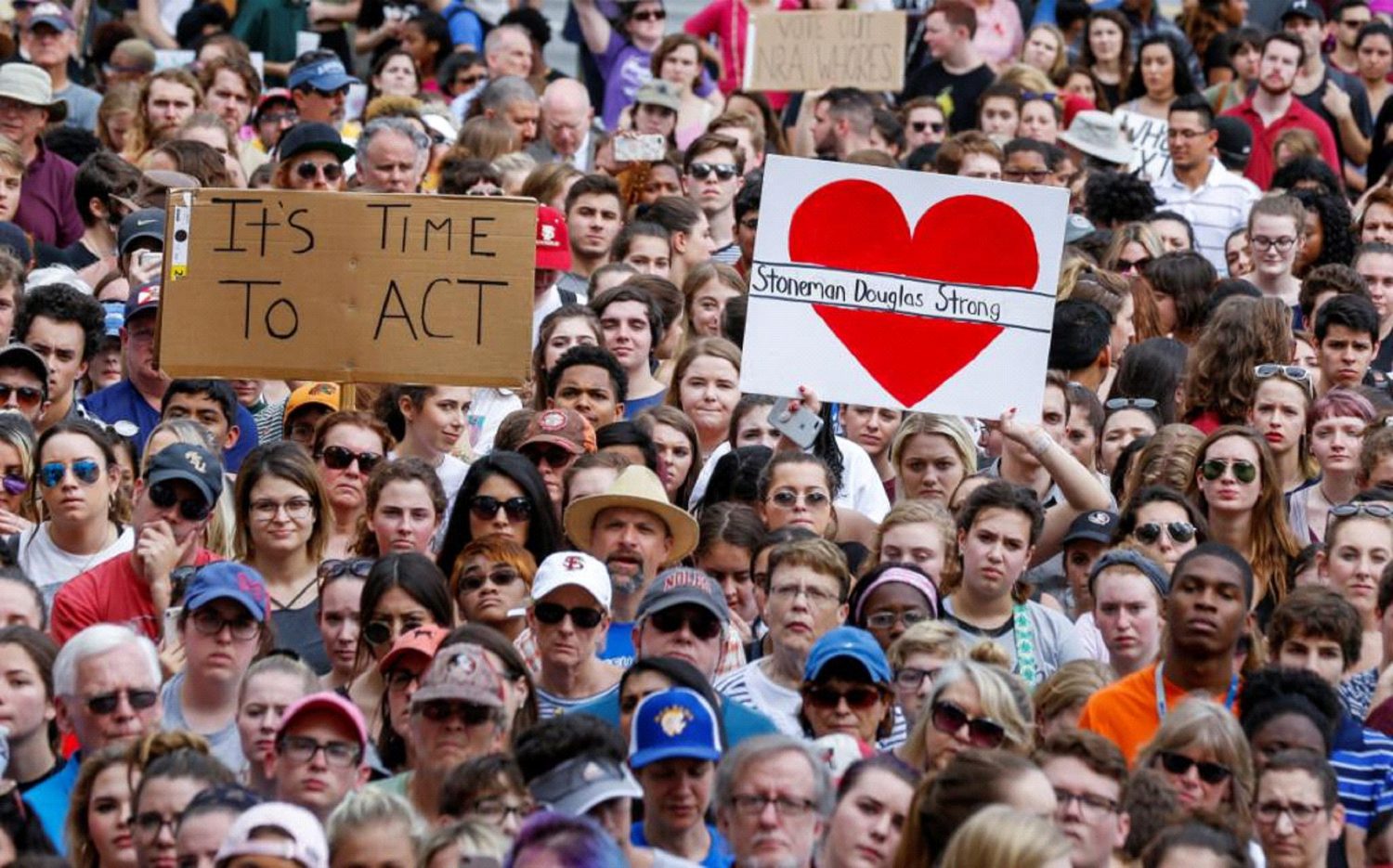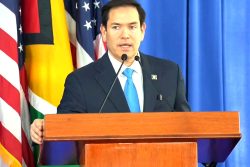WASHINGTON/TALLAHASSEE, Fla., (Reuters) – Students galvanized by the deadly mass shooting at a Florida high school confronted lawmakers yesterday with demands to restrict sales of assault rifles, while President Donald Trump suggested arming teachers as a way to stop more U.S. rampages.
The unprecedented lobbying effort by groups of teenagers and parents at the White House and at the Florida statehouse in Tallahassee played out as fellow students staged classroom walkouts and rallies in cities across the country.
Trump, in an emotional hour-long meeting with students who survived the Florida shooting and a parent whose child did not, said arming teachers and other school staff could help prevent future mass shootings, voicing support for an idea backed by the powerful National Rifle Association gun lobby.
The Republican president, who has championed gun rights and was endorsed by the NRA during the 2016 campaign, said he would move quickly to tighten background checks for gun buyers and would consider raising the age for buying certain types of guns.
The attack at Marjory Stoneman Douglas High School in Parkland, Florida, where 17 students and educators were slain on Feb. 14 in the second-deadliest shooting at a U.S. public school, has revived the long-running U.S. debate over gun rights.
Investigators said the assault was carried out by 19-year-old former Stoneman Douglas student Nikolas Cruz, who purchased an AR-15 nearly a year ago.
“Nikolas Cruz was able to purchase an assault rifle before he was able to buy a beer,” Laurenzo Prado, a Stoneman Douglas student, told reporters at the Florida state capital, referring to a Florida law that allows people as young as 18 to buy assault weapons. “The laws of the country have failed.”
Florida lawmakers in Tallahassee said they would consider raising the age limit to 21, the same standard for handguns and alcohol, although the state Senate on Wednesday opted not to take up a gun control measure.
The U.S. Constitution protects the right of Americans to bear arms, a measure fiercely defended by Republicans. But Trump has come under pressure to act.
During the televised White House “listening session” with students, parents and people affected by other U.S. school shootings, Trump spoke at length about how armed teachers and security guards could frighten off potential shooters and prevent more deaths.
“If you had a teacher … who was adept at firearms, they could very well end the attack very quickly,” he said, while acknowledging that the proposal was controversial. Some of the meeting participants indicated support. Others were opposed.
Mark Barden, whose son was killed in the 2012 Sandy Hook Elementary School shooting in Connecticut, said his wife, Jackie, a teacher, “will tell you that school teachers have more than enough responsibilities right now than to have to have the awesome responsibility of lethal force to take a life.”
After the Sandy Hook shooting, a task force backed by the NRA recommended more armed guards and teachers in schools. Trump listened intently to ideas from about 40 people, including those from six students who survived the Florida shooting.
“I don’t understand why I could still go in a store and buy a weapon of war,” said Sam Zeif, 18, sobbing after he described texting his family members during the attack. “Let’s never let this happen again, please, please.”
Andrew Pollack, whose daughter Meadow Pollack, 18, was killed, shouted: “It should have been one school shooting and we should have fixed it. And I’m pissed, because my daughter – I’m not going to see again.”
Trump sat in the middle of a semi-circle in the White House State Dining Room. Photographers captured images of his handwritten note card with questions like “What would you most want me to know about your experience?” and “I hear you.”
Before Trump’s meeting, students across the United States walked out of classes in sympathy protests, including hundreds of teens from the Washington suburbs who gathered in front of the White House.
“I came out here because I don’t feel safe in my school,” said Allyson Zadravec, 15, of Northwood High School in Silver Spring, Maryland. “I want to make sure that everyone who can do something about it hears that I don’t feel safe in my school.”
In the Florida state capital, Tallahassee, students demanded that lawmakers restrict sales of assault rifles. Some wore T-shirts and carried signs reading: “We call B.S.,” one of the slogans of the movement started by the survivors.
Trump also said he was open to looking at age limits, among other measures, and lamented the closure of many mental institutions to help assess violent people.
“There’s no … middle ground of having that institution where you had trained people that could handle it and do something about it,” Trump said.
At a town hall program televised on CNN on Wednesday night, Fred Guttenberg, whose daughter was killed at Stoneman Douglas, told Republican Senator Marco Rubio of Florida that his comments and those of the president’s in the past week had been “pathetically weak.”
Rubio, under fire for saying the problems could not be solved by gun laws alone, said he would support a law that would prevent 18-year-olds from buying a rifle as well as a ban on “bump stocks,” an accessory that enables a rifle to shoot hundreds of rounds a minute.
Trump on Tuesday directed the Justice Department to work on a regulation that would effectively ban such devices.
Last October, a retired real estate investor and high-stakes gambler used multiple assault rifles equipped with bump stocks to kill 58 people at a Las Vegas outdoor concert, the deadliest attack by a single gunman in U.S. history. Bump stocks have not played a prominent role in other recent U.S. mass shootings.
The NRA opposes an outright ban on bump stocks but has said it would be open to restrictions on them.









